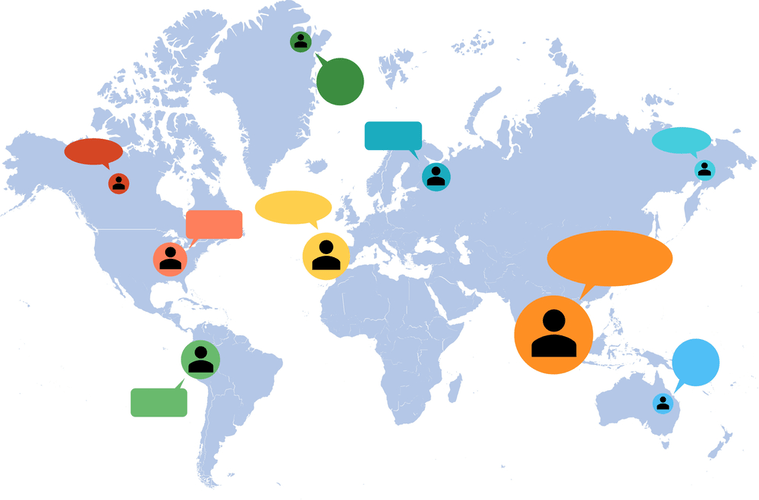Tuckman’s foundation helps team leaders understand how team dynamics change as a project progresses. By understanding the five stages of group development, you can support your team as they’re getting to know one another to quickly enable collaboration and effective teamwork. Supervisors of the team during this phase are almost always participating. Even the most high-performing teams will revert to earlier stages in certain circumstances.
Information flows seamlessly and is uninhibited due to the sense of security members feel in the norming stage. Team Tasks during the Storming stage of development call for the team to refocus on its goals, perhaps breaking larger goals down into smaller, achievable steps. The team may need to develop both task-related skills and group process and conflict management skills. A redefinition of the team’s goals, roles and tasks can help team members past the frustration or confusion they experience during the Storming stage. As a team lead, it’s your goal to get your team to this stage as quickly as possible. In this stage, team members are in the process of learning how to work together.
The stages of group development with examples, explained
Celebrating the wins and the losses should be part of every project stage. While it’s important to celebrate your accomplishments, you also don’t want to ignore the struggles. Team members can even communicate through Motion — they can easily reach out with questions, concerns, and updates. Set up a meeting cadence so your employees can count on regular check-ins. For example, have the team members anticipate a 30-minute team meeting weekly in addition to a daily stand-up for progress checks. Seventy-two percent of companies report high engagement when they employ best practices, leading to better business outcomes.

During the Norming stage of team development, team members begin to resolve the discrepancy they felt between their individual expectations and the reality of the team’s experience. If the team is successful in setting more flexible and inclusive norms and expectations, members should experience an increased sense of comfort in expressing their “real” ideas and feelings. Team members feel an increasing acceptance of others on the team, recognizing that the variety of opinions and experiences makes the team stronger and its product richer. Members start to feel part of a team and can take pleasure from the increased group cohesion. This paper became the groundwork for the stages of group development.
Organizational Communication Anthology
We also discuss concepts of resilience and how they can be best understood. None of us have perfect information, but we can get closer by sharing what we know and what we see. I like to play a game https://www.globalcloudteam.com/ I call “Pin the Tail on the Tuckman” to uncover those differences in perception and align on where a team is at. Asana is easy for all teams to use, so you can deliver quality work, faster.

Simply log into Settings & Account and select “Cancel” on the right-hand side. If you do nothing, you will be auto-enrolled in our premium digital monthly subscription plan and retain complete access for $69 per month. Change the plan you will roll onto at any time during your trial by visiting the “Settings & Account” section. Keep your team turning toward each other by celebrating the wins and addressing the struggles.
Why do people join groups?
The addition of some implementers to the team is also a good idea to make plans for progress and team development. Finally, a resource investigators is needed to go outside of team and look at competition. It served as a tool for monitoring and tracking youth development in key areas and has been further supported by aligned initiatives such as Youth2030 (9). However, despite
a gradual increase in youth participation mechanisms in decision-making since the launch of WPAY, youth policy and programmatic efforts remain considerably underfunded. Here, leadership is tasked with evaluating the team’s effectiveness and acknowledging its members’ efforts, including any celebration or recognition to provide a sense of closure.
By developing your own leadership skills, you can model collaboration best practices and help your team reach their fullest potential. In addition to establishing your team’s mission or goal, it’s also important to set roles for individual team members. As you add people to the team, pay attention to what qualities and skills you’ll need to complete the project.
Working to build a better world
Violations of group rules, however, typically result in more explicit punishments than do violations of norms. Although we often have negative connotations of storming and conflict, the group conflict that happens in this stage is necessary and productive. Remove obstacles by coordinating tightly with adjacent and upstream teams. Validate your assumptions about what your customers need, then proactively decide what you’re not doing right now so you don’t get distracted.

In the earlier stages of your team’s formation, establish a clear communication plan. A communication plan is an outline of how your team is going to communicate important information to key stakeholders. Clarity on the various avenues of communication allows team members to effectively get work done, understand their roles, and know where to find the information they need about work. Establishing a communication plan can help you do all of these things in a way that’s easy for your team to follow.
Signs and questions to look out for in the storming stage
You recognize that your team is new, and want them to feel supported, motivated and psychologically safe. So, you host a meeting where your team can get to know one another, their work style, and the way they feel appreciated. Your team is new and excited to learn about upcoming projects as well as about each other. You outline the work, as well as key milestones, deliverables and objectives. If you reflect on them, they’ll tell you a cohesive story about their strengths, needs and performance.
- Even the most successful groups, committees, and project teams disband sooner or later.
- The team may find that this is an appropriate time for an evaluation of team processes and productivity.
- Although the word storming and the concept of conflict have negative connotations, conflict can be positive and productive.
- In a nutshell, the author of the said paper argues that people often harbor negative or positive attitudes toward other group members before even a conversation has started group-wide.
- Validate your assumptions about what your customers need, then proactively decide what you’re not doing right now so you don’t get distracted.
- Meetings and other interactions will generally involve cautious attempts to get acquainted and discussions of big-picture concepts, as members determine norms and, in some cases, form cliques.
As a productivity author and researcher, Stefan has crafted countless articles on improving habits and soft skills. A life enthusiast to his bones, he has spent many years in the quest for the perfect optimization software and time management strategies — and has found them. Surprisingly, leadership coach Alexis Haselberger told me that spending 4 stages of group formation lots of time in this stage is, actually, not an issue. Since the Storming Stage can be infused with power struggles, I sat down with a leadership coach, Alexis Haselberger, to dive deeper. She told me that we must do our best to name the problems and address them properly — especially at this point, where we risk getting stuck in this stage.
Norming and re-norming
The adjourning stage occurs when the goals have been achieved or the project completed. The performing stage typically indicates that the project is nearing completion. The team members may also feel a renewed sense of commitment to their goals or project. The performing stage is where each team ultimately wants to end up. The initial excitement of joining the group wanes as the members start to feel the weight of their projects or raise concerns about their responsibilities. In any case, it’s the saddest of all the 5 stages of group development.
Over 200,000 kilometers of free-flowing river habitat in Europe is … – Nature.com
Over 200,000 kilometers of free-flowing river habitat in Europe is ….
Posted: Mon, 09 Oct 2023 11:57:35 GMT [source]
